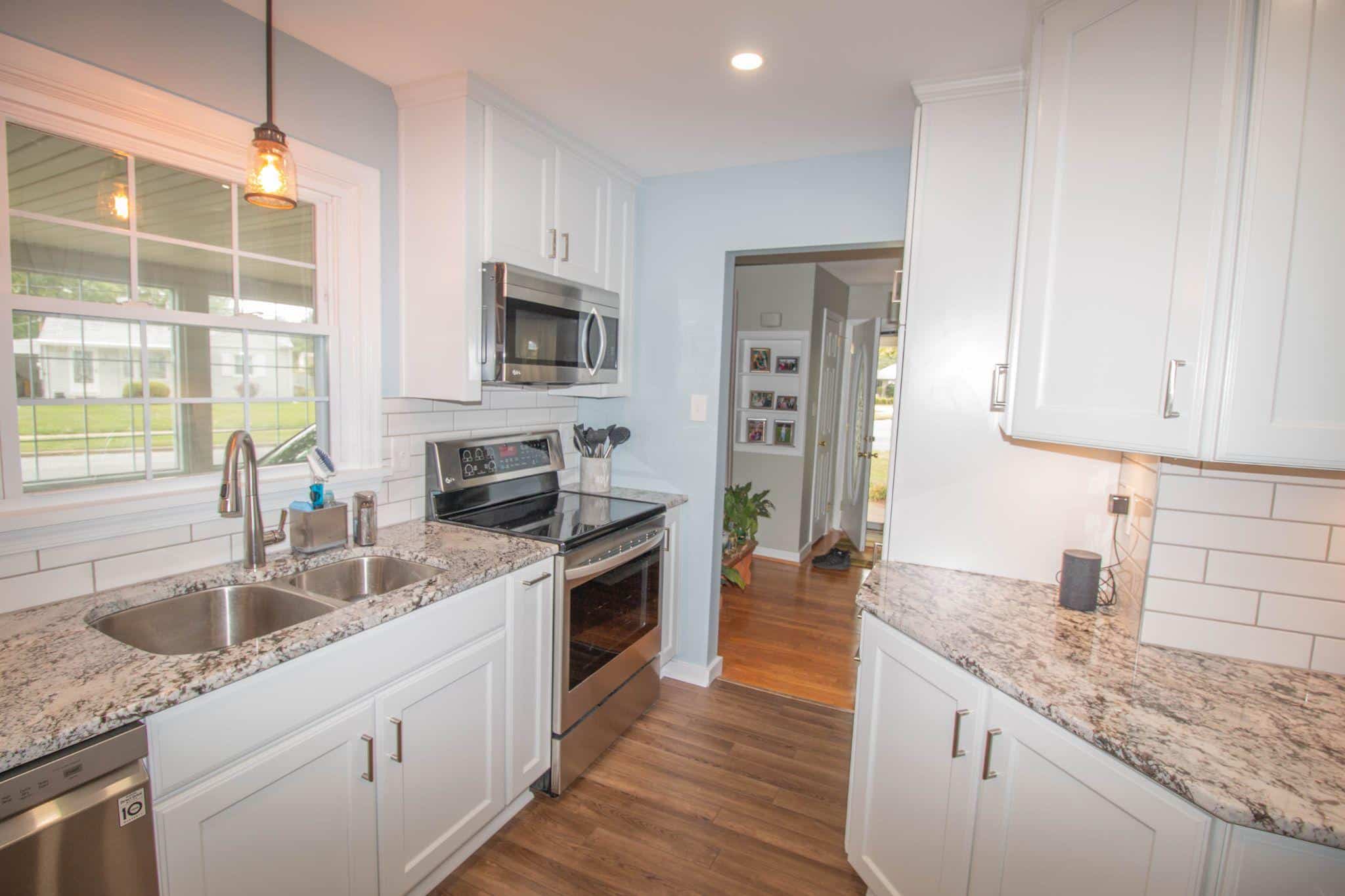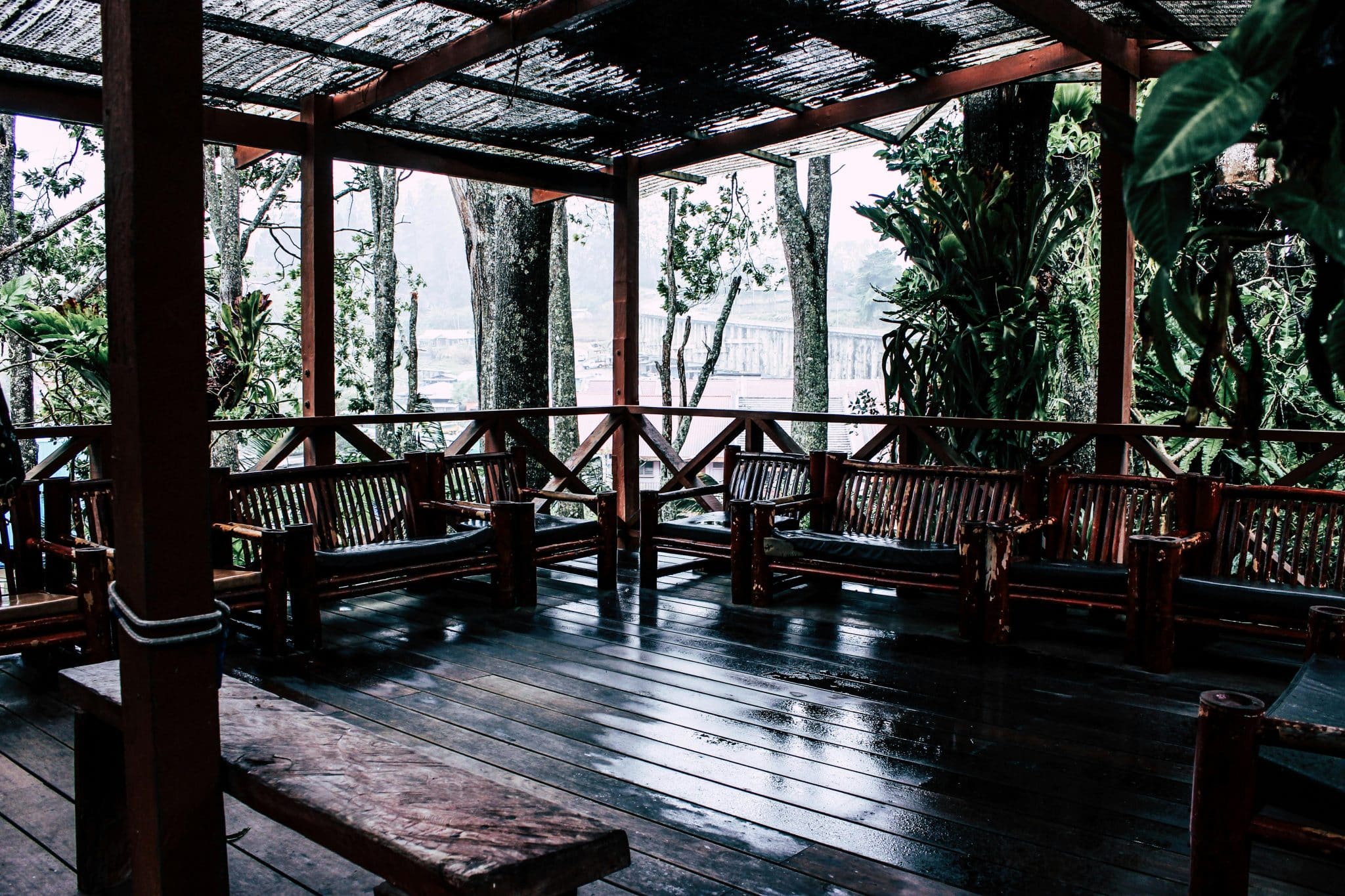Looking at your home’s foundation, you might notice bare soil or struggling plants right next to your house. Many homeowners face this common problem when trying to create beautiful landscaping around their foundation.
Poor foundation landscaping can lead to serious issues. Water damage, pest problems, and even structural damage can cost thousands of dollars to repair. Without proper planning, your yard work might actually harm your home’s foundation.
The good news? You can have both beauty and safety. Smart landscaping choices protect your foundation while creating an attractive yard. The right plants, proper drainage, and correct spacing make all the difference.
This guide shows you exactly how to landscape safely next to your foundation. You’ll learn which plants to choose, how far to plant them, and simple drainage tricks that protect your home while keeping your yard looking great.
Why Landscaping Near the Foundation Matters?
Smart landscaping around your foundation does more than just look good.
Proper grading and drainage prevent water from pooling near your home’s base, which is the top cause of foundation problems. When water sits against your foundation, it can seep into small cracks and cause serious damage over time.
- Water damage prevention: Correct slope and drainage systems, and direct water away from your foundation walls.
- Enhanced curb appeal: Well-planned foundation landscaping creates an attractive, welcoming exterior that increases property value.
- Foundation protection: Strategic plant placement and soil management prevent cracks, leaks, and structural settlement.
Proper landscaping boosts curb appeal and invites neighbors but poor choices can damage foundations through heavy clay soils, improper plant placement, and bad drainage, causing cracks, leaks, and settling.
Correct landscaping protects your biggest investment while creating a beautiful, valuable yard.
Key Considerations for Landscaping by Your Foundation
Before you start planting, you need to understand your specific situation. Not all foundations are the same, and your soil type matters more than you think.
Poor planning here can lead to costly mistakes that damage your home’s structure.
1. Soil drainage testing : The process of checking how quickly water moves through your soil by digging a test hole and timing how long water takes to drain
2. Clay vs. sandy soil properties – Clay soil holds water longer and can cause foundation pressure, while sandy soil drains quickly but may not provide enough moisture retention for plants
3. Foundation type identification – Determining whether your home has a slab, crawl space, or basement foundation, as each requires different landscaping approaches and setback distances
4. Local building code requirements – Municipal regulations that specify minimum distances between plants and foundations, often requiring 2-6 feet of clearance depending on your area
5. HOA landscaping guidelines – Homeowner association rules that may limit plant types, heights, or landscaping styles allowed near your foundation and property lines
Each of these factors affects what you can plant and where you can plant it. Understanding these basics before you start digging saves time, money, and protects your foundation from future problems.
Best Landscaping Practices Near the House Foundation
The right techniques make all the difference between a beautiful yard and foundation damage.
These proven practices protect your home while creating the look you want. Follow these methods to avoid costly repairs down the road.
1. Grade the Soil Away from the Foundation

Proper grading is your first line of defense against water damage. The ground should slope away from your foundation at least 6 inches over the first 10 feet. This simple step prevents water from pooling against your home’s base, which is the main cause of foundation problems.
- Create a 2% slope: Aim for a gentle decline that moves water away without creating erosion issues
- Use fill dirt when needed: Add clean soil to build up areas that slope toward your foundation
- Check grading twice yearly: Settling and weather can change your slope over time, so inspect and adjust as needed
Keep in mind: Heavy rains can wash away poorly graded soil, so pack the earth firmly and consider adding erosion control measures on steep slopes.
2. Use of Permeable Materials

Permeable materials help water flow through rather than pooling on the surface. Gravel, mulch, and decorative stone create attractive borders while protecting your foundation. These materials also reduce weeds and maintenance needs around your home.
- Install landscape fabric first: This prevents weeds while allowing water to pass through to the soil below.
- Choose appropriate stone size: Smaller gravel works better for drainage, while larger stones provide better visual appeal.
- Maintain proper depth: Keep permeable materials 2-3 inches deep for best results.
Keep in mind: That Organic mulches, such as wood chips, break down over time and require replacement, while stone materials last longer but cost more upfront.
3. Proper Plant Selection

The wrong plants can cause serious foundation damage through root growth and water issues. Choose plants with shallow, non-invasive root systems that won’t grow too large. Small shrubs, perennials, and ground covers work best near foundations.
- Avoid trees and large shrubs: These have extensive root systems that can damage foundations and plumbing
- Select drought-tolerant plants: These need less water, reducing moisture problems near your foundation
- Consider mature size: Plants that seem small now can grow much larger and cause problems later
Keep in mind: Native plants often work best because they’re adapted to your local climate and soil conditions, requiring less water and maintenance.
4. Incorporating Drip Irrigation Systems

Drip irrigation delivers water directly to plant roots, avoiding oversaturation of the soil.
This controlled watering method prevents the wet-dry cycles that can damage foundations. It also saves water and keeps your plants healthier with consistent moisture.
- Install timers for consistency: Automated systems ensure regular watering without human error
- Position emitters away from foundation: Place drip lines at least 18 inches from your home’s base
- Use pressure-compensating emitters: These provide even water distribution across your entire system
Keep in mind: Drip systems need regular maintenance to prevent clogs and ensure proper water flow, so check them monthly during the growing season.
Landscaping Ideas for Different Foundation Types
Different foundation types require specific landscaping approaches to remain safe and aesthetically pleasing. Your foundation type determines what plants you can use and where you can place them.
Understanding these differences helps you make the right choices for your home.
| FOUNDATION TYPE | BEST PLANT OPTIONS | WHAT TO AVOID | SPECIAL CONSIDERATIONS |
|---|---|---|---|
| Slab Foundation | Low-growing ground covers, shallow-rooted perennials, and small ornamental grasses. | Trees with tap roots, large shrubs, and plants that need deep watering. | Keep plants 3+ feet from slab edges, use drip irrigation to control moisture, and monitor for any cracks in the concrete. |
| Crawl Space Foundation | Medium-height shrubs, raised flower beds, plants that improve air flow. | Dense ground covers that block vents, plants that hold moisture, thick mulch near vents. | Maintain clear airflow around vents, use gravel or stone near vent openings, install proper drainage systems. |
| Basement Foundation | Taller shrubs for privacy, plants that don’t block windows, decorative screening plants. | Large trees near basement walls, vines that can damage exterior, plants that block emergency exits. | Keep basement windows clear, ensure proper water drainage, create attractive foundation concealment. |
Each foundation type has unique needs that affect your landscaping choices. Slab foundations are most sensitive to root damage, while crawl spaces need good ventilation.
Basement foundations offer more flexibility but require careful window and drainage planning.
Maintaining Your Landscaping Around the Foundation
Foundation landscaping isn’t a one-time job. Regular maintenance keeps your yard looking good and your foundation safe from damage. Small problems caught early save you from expensive repairs later.
- Foundation crack inspection: The process of checking your foundation walls every few months for new cracks, water stains, or settling signs that could indicate drainage problems
- Drainage assessment: Examining how water flows around your foundation after heavy rains to identify pooling areas, clogged gutters, or blocked drainage systems
- Plant overgrowth monitoring: Regularly checking that shrubs and plants haven’t grown too close to your foundation or begun blocking vents, windows, or walkways
- Mulch refresh and maintenance: Replacing old mulch annually to maintain proper moisture control, prevent weeds, and keep a neat appearance around your foundation
- Soil grading adjustment: Periodically adding soil and reshaping the ground slope around your foundation as settling occurs and weather changes the original grade
These simple maintenance tasks protect your investment and keep problems small. A quick monthly walk around your foundation can spot issues before they become costly repairs.
Conclusion
Smart landscaping around your foundation protects your home and enhances curb appeal by choosing the right plants, ensuring proper drainage, and maintaining safe distances.
Remember to slope soil away from your foundation, select plants with shallow roots, and inspect your landscaping regularly.
So what does this mean for you?
Ready to start your foundation landscaping project? Begin with proper grading and drainage, then choose plants that work with your foundation type.
Take it step by step, and don’t hesitate to consult a professional if you’re unsure about any aspect of the work.
What’s your biggest concern about landscaping near your foundation? Share your questions in the comments below!








